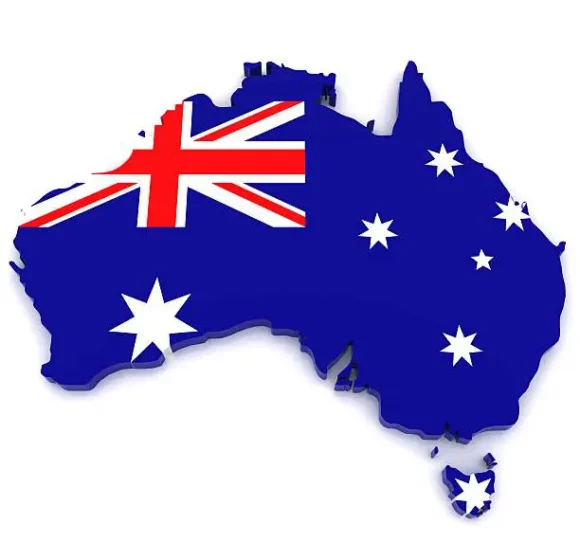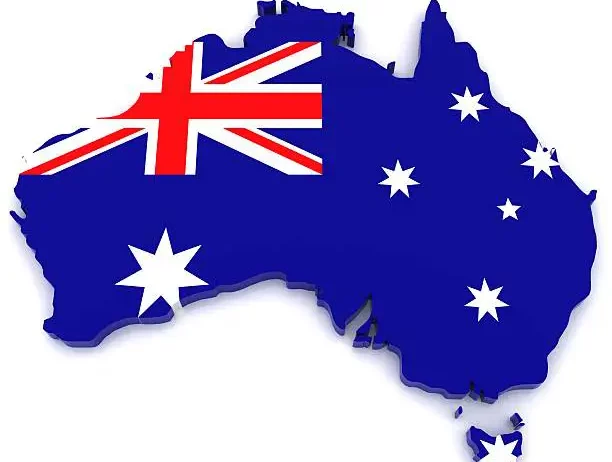Study MBBS in Australia
AUSTRALIA COUNTRY PROFORMA
About Australia
The only nation in the world to occupy an entire continent is Australia. It is among the world’s largest nations. Australia has a lot of arable land and abundant natural resources, but over one-third of it is desert.
Due to their more temperate climates, the southwest and southeast of Australia are home to the majority of its cities and farms. In the northeast there are substantial rain forests. The largest deserts in the nation are found in the well-known outback, which isolated rural areas with extreme heat, little water, and little vegetation.
The Great Dividing Range envelops Australia’s eastern and southeast regions. Water from this 2,300-mile (3,700-kilometer) mountain range flows into the Great Artesian Basin, the world’s largest groundwater source, and Australia’s most significant rivers.
WDOMS List of MBBS College in Australia
- Australian National University School of Medicine and Psychology – Canberra
- Bond University Faculty of Health Sciences & Medicine – Gold Coast
- Curtin Medical School – Perth
- Deakin University School of Medicine – Geelong
- Flinders University of South Australia School of Medicine – Adelaide
- Griffith University School of Medicine – Southport
- James Cook University College of Medicine and Dentistry – Douglas
- Macquarie University Faculty of Medicine & Health Sciences – Sydney
- Monash School of Medicine – Clayton
- The University of Western Australia Faculty of Health and Medical Sciences – Perth
- University of Adelaide Faculty of Health and Medical Sciences – Adelaide
- University of Melbourne Faculty of Medicine, Dentistry & Health Sciences – Parkville
- University of New England School of Rural Medicine – Armidale
- University of New South Wales Faculty of Medicine – Sydney
- University of Newcastle Faculty of Health and Medicine – Callaghan
- University of Notre Dame Australia School of Medicine, Fremantle – Fremantle
- University of Notre Dame Australia School of Medicine, Sydney – Darlinghurst
- University of Queensland Faculty of Medicine – Herston
- University of Sydney, Sydney Medical School – Sydney
- University of Tasmania School of Medicine – Hobart
- University of Wollongong Graduate School of Medicine – Wollongong
- Western Sydney University School of Medicine – Campbelltown
Climate at Australia
The climate of Australia is highly variable throughout the nation. The tropical regions make up about 40% of the country’s northern region. Summertime monsoon winds bring with them humid air, and the period of heavy precipitation from December to March referred to as “the wet season.” The southern region of the nation experiences four distinct seasons, cool winters, and hot summers. Since Australia is located in the Southern Hemisphere, June, July, and August are the winter months and December, January, and February are the summer months. In Australia, the majority of people—nearly 90%—live near the coast, where cooling ocean breezes keep temperatures low.
Study MBBS in Australia
In recent years, medical studies in Australia have become more and more popular, particularly among Indian students. Australia has some of the greatest options for medical education worldwide, and its universities renowned for their excellent programmes in teaching, research, and healthcare infrastructure. Because Australia has cheaper living expenses and tuition than the US or the UK, it is a desirable option for Indian students pursuing an MBBS.
International students pursuing a Bachelor of Medicine and Bachelor of Surgery (MBBS) degree welcomed in Australia each year. The best MBBS programmes offered by Australian universities because of their distinctive campus experiences, knowledgeable faculty, broad curriculum, and hands-on training opportunities.
MBBS for Indian Students in Australia
Among the most sought-after programmes for Indian students studying in Australia is MBBS. The Australian Medical Council accredited Australian universities and medical schools.
Australia offers early and comprehensive clinical exposure to students pursuing medical degrees, providing them with practical experience in a variety of medical settings. Additionally, the Australian MBBS programme offers a thorough curriculum that includes a large number of theoretical and practical sessions.
If you want to study medicine (MBBS) in Australia after high school, you need to have finished your +2 coursework in biology, chemistry, and physics. In Australia, a lot of universities that offer medical degrees also demand that applicants have passed competitive exams like NEET, UMAT, and UCAT.
Working with some of the best talent and infrastructure as a medical practitioner is possible in Australia thanks to its well-developed healthcare system and world-class medical research sector.
Most MBBS degrees from Australia recognised internationally.
Advantages of studying medicine in Australia for Indian Students
1.Excellent Instruction
In an effort to establish Australia as the top global destination for higher education, the Australian government has spared no effort. The government has taken steps to ensure that all aspects that facilitate international students’ ability to afford education there have been addressed. A few of the key elements that have contributed particularly to accomplishing the above are:
- Reasonably priced, high-quality lifestyle with extra benefits for overseas students
- Steadily raising the native universities’ rankings
- Extreme attention to international students’ safety as well as law and order
- Numerous opportunities for research grants and scholarships
- High rates of employment
- Overall lower tuition costs for an education of the same caliber as in the USA
2.A Strong Resume
Your career may benefit greatly from pursuing an MS or graduating from Australia, as the Australian graduate student tag is highly valued. To ensure that students receive greater exposure, universities collaborate with corporate firms on several live projects. Thus, the student’s resume gains a professional experience credential in addition to the internships alone. Finally, the majority of training programmes and courses taken by foreign students in Australia are covered by the Australian Qualification Framework (AQF), which is well-known and respected throughout the world.
3.A lighter financial load
To encourage international students to finish their education, the Australian government has set aside 200 million for scholarships. In order to help students pay for their expenses, universities also allow their students to work part-time jobs on campus.
If one has enough time, they can also work part-time jobs outside of universities.
4.Straightforward Permanent Residency (PR)
Another factor that makes Australia the top choice for international students is its permanent residency. Students can apply for a variety of visas from the Australian government to become permanent residents.
If you are able to work for a significant number of years and meet the requirements, you can also obtain Permanent Residency through work visas. Students may be granted a Post-Study Work Permit for up to two years, which will aid them in finding employment in their field. The industries of agriculture, aviation, accounts and actuaries, information technology, and medicine all have a lot of job openings.
Therefore, Australia is a fantastic option if you’re a student considering moving there after earning your master’s or bachelor’s degree.
Disadvantages of studying medicine in Australia for Indian Students
1.Options for Transportation
Australia’s public transport networks are insufficient and difficult to use. Even though all the modes are available, they are either too costly or do not cover the required distance. Australia’s transport system is primarily based on its roads. Because of this, the road network is unique, and driving is typically more expensive due to the vastness of the territory. That might be beyond the regular means of an average student. Nonetheless, the Australian government provides transport subsidies to overseas students. These accommodations can help you keep the cost of your trip reasonable. Additionally, most courses offer on-campus housing, which will significantly reduce your travel time.
You can find all the information you need about international students’ transport and commuting options in Australia in this article.
2.The Puzzle of Culture
Although there are many different cultures in Australia, some local Australians do not share this tolerance. Due to the high prevalence of racism in this nation, Australian universities have strict policies in place to prevent discrimination of any kind. Although racism is illegal, prejudice still exists, so international students would be well to avoid radicals and mix with a more accepting and tolerant student body.
3.Adverse Weather Situations
Australia’s summer and winter weather extremes are well-known. The country’s central desert regions experience long, hot summers with temperatures reaching 40°C. For students from colder climates, the long, hot days are nearly intolerable, and you might find yourself spending your time indoors, where air conditioning is more comfortable. For students from tropical countries, the winter temperatures in Australia’s higher regions can drop below freezing point, making it an extremely cold experience. But over time, students learn to cope with these weather extremes by dressing appropriately and staying inside when needed.
4 Wild Things
Due to its reputation for having abundant wildlife, Australia is a popular travel destination worldwide. Nonetheless, the locals may start to worry about the same issue. It is not unusual to have a huge tarantula greet you or to find coconut crabs right on your doorstep. Additionally unsafe are the restrooms, from which pythons have been known to emerge. Additionally common are snakes becoming lodged in air conditioning ducts.
Regarding the educational requirements, this is not a disadvantage, but one must exercise extra caution when studying in Australia. We believe that if you stay in a city or on a university campus, this might not be such a big inconvenience.
5.Online resources
Despite being a developed nation, Australia’s internet connectivity is not as good as one might anticipate. Australia’s underdeveloped broadband technologies are one unexpected cause of low internet speed. The average internet speed in this country is 8.5 Mbps, placing it 51st in the world. You may need to conduct extensive research before choosing to enrol in a course that depends on the internet.
MBBS eligibility
- Students who pass the 12th grade are eligible for the Dual Degree (BMed + MD) or MBBS programme. English, mathematics, chemistry, or biology required courses.
- MD: Candidates with a bachelor’s degree may apply immediately for the MD position.
- However, to be admitted to this programme, the majority of the best Australian universities require GAMSAT or MCAT scores.
- The candidate must be at least 17 years old.
- The IELTS/TOEFL exam must be passed with a minimum score of 7 points by the applicants.
- The candidate needs to pass the UMAT exam that the university
Student life in Australia (for eg. Cost of Living, Educational System, Accommodation, Language, Cultural Experience)
Cost of Living
For any student who intends to study overseas, money management should come first. Answering the question ‘How much does it cost to study in Australia?’ is straightforward and can achieved by taking into account several factors. Your location in Australia, the university you enrolled in, the kind of education you are pursuing, and other factors will all affect the cost. However, an essential component of financial planning is understanding the average cost of commonplace goods. The entire cost of studying abroad is increased by additional fees like housing, transportation, food and supplies, and other incidentals, on top of the lakhs of rupees paid on tuition.
Educational System in Australia
The Bachelor of Medicine, Bachelor of Surgery (MBBS) degree is awarded after a five- to six-year undergraduate programme in Australia’s educational system. The curriculum emphasizes early exposure to patient care by fusing theoretical knowledge with clinical training. Foundational medical sciences are typically covered in the first few years, and then clinical rotations in a variety of specialties come next. Critical thinking, evidence-based medicine, and effective communication are highly valued in Australia.
Since English is the primary language of instruction for medical students, foreign students may need to prove their language skills with standardized exams. After graduating, students work under supervision for several years before becoming fully registered medical practitioners, followed by a one-year internship.High standards, research opportunities, and an emphasis on developing skilled and compassionate healthcare professionals are hallmarks of Australia’s medical education system.
Accommodation in Australia
In Australia, there are numerous options for student housing. An apartment with private single rooms is available for approximately 244-449 AUD (INR 13105.77 – 24116.76) per week. The weekly cost of a shared room in a single room apartment is approximately 230-399 AUD (INR 12353.80 – 21431.15).
Language
English is the medium of instruction for MBBS students in Australia. English is used for all medical programme communication with patients, clinical training, and lectures. English language proficiency is a basic prerequisite for both domestic and foreign students. During the admissions process, international students whose first language is not English are usually expected to prove their English language competency using standardized tests like the Occupational English Test (OET) or the International English Language Testing System (IELTS). To ensure that students can actively participate in their medical education and provide high-quality healthcare services in the diverse and multicultural Australian healthcare environment, a strong command of the English language is essential for effective communication in both academic and clinical settings.
Culture Experience
Australia’s diverse and inclusive society is a defining feature of the cultural experience for MBBS students studying there. Due to its diverse population, Australia is a great place for medical students to interact with people from different backgrounds, cultures, and ethnicities. Having more exposure to different cultures improves one’s ability to provide patient-centered care. Cities in Australia have a thriving cultural scene that includes museums, festivals, and other activities that let students discover and value the diverse range of Australian customs and artwork.
Students who participate in clinical placements within the Australian healthcare system are exposed to a diverse range of healthcare environments, which enhances their overall cultural experience. Accepting this cultural diversity enhances the educational experience and gets aspiring medical professionals ready for a career in a multicultural and globalized healthcare environment.
Links
https://www.idp.com/india/study-in-australia/education-system/
https://blog.msinaustralia.com/advantages-disadvantages-studying-in-australia












